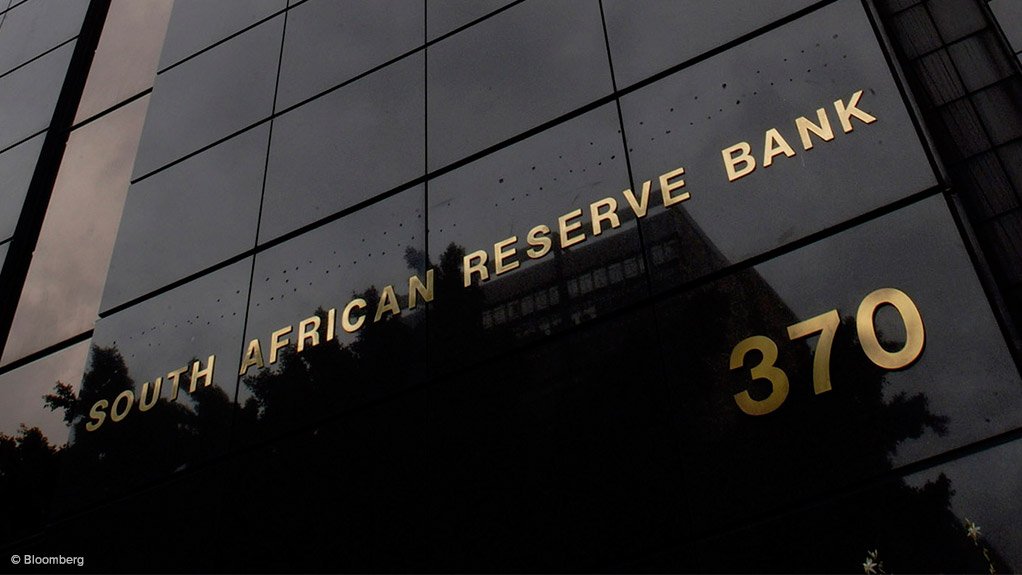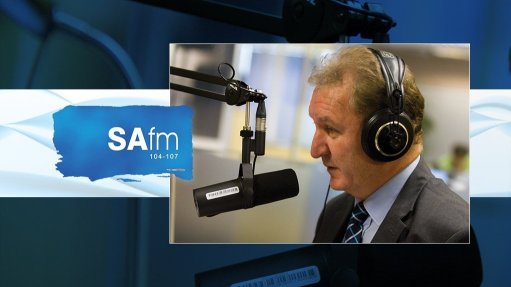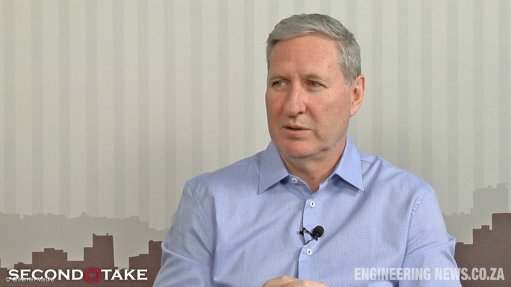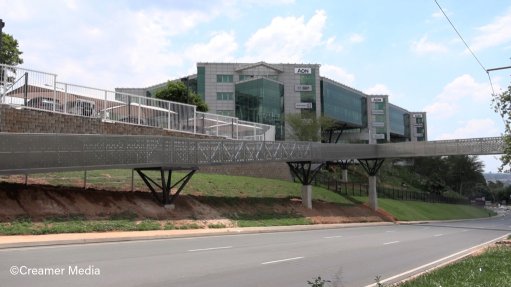Central banks stare into trade-war abyss with rate cuts primed
Global central banks will mostly stand ready for interest-rate cuts in coming months to cushion their economies from US President Donald Trump’s trade war.
Despite flux in implementation, his tariffs have so far depressed growth prospects everywhere and raised the risk of an American recession. The World Trade Organization has already predicted a decline in international commerce this year, and the International Monetary Fund is set to lower its outlook this week.
That backdrop is why Bloomberg Economics sees most monetary officials poised to lower borrowing costs, albeit warily, in order to mitigate the worst of the fallout. Its composite measure of advanced-economy rates is predicted to decline by about half a percentage point before the end of the year.
The case to tread cautiously with easing is the need to guard against inflation pressures, either lingering from the previous consumer-price surge, or looming from the current crisis.
The Federal Reserve faces the greater challenge there. Levies imposed by the White House are likely to raise prices automatically for American consumers — a hit that Chair Jerome Powell pledged to watch closely in a speech last Wednesday. The risk there is one reason why BE doesn’t envisage much easing in the US.
Global peers will watch out for countermeasures and escalation in the trade war to gauge the threat of inflation re-emerging in their own economies. Any price effects “will only become clearer over the course of time,” European Central Bank chief Christine Lagarde said last week.
Currency volatility posed by the weakening dollar amid questions on the integrity of US decision-making could prove an added test for some, such as the Swiss.
However monetary policy around the world pans out, the visibility for officials at present is alarmingly low, exacerbated by the difficulty of accounting for Trump’s changeable whims.
Nevertheless, BE has charted the path forward as much as is possible in this latest edition of our quarterly guide to 23 central banks around the world — accounting for a combined 90% of the global economy.
GROUP OF SEVEN
US Federal Reserve
* Current federal funds rate (upper bound): 4.5%
* Bloomberg Economics forecast for end of 2025: 4.25%
* Market pricing: Money markets fully price three quarter-point cuts this year and a chance of about 60% of a fourth. Swaps attribute a 70% probability to a quarter-point rate cut coming by June, which would be the first this year.
The Trump administration’s aggressive tariffs are calling into question Fed policy in 2025. Uncertainty over how the economy will react to the levies has already impacted consumer and business sentiment. Now, economists worry that new policy will slow down growth and drive up inflation, even if just temporarily.
For the Fed, that may mean choosing between cutting rates further to boost the economy or leaving them on hold for longer (or even hiking) to combat a runup in price pressures. For now, policymakers remain in the “wait and see” stance they took at the beginning of the year as they assess incoming economic data.
What Bloomberg Economics Says:
“Inflation remained stubbornly high in 1Q2025, with core PCE still well above the Fed’s 2% target. FOMC members are increasingly uneasy about tariff-driven price pressures, and seeing echoes of 2022. As a result, we expect just one Fed rate cut this year—likely in 4Q—well below the roughly three cuts priced in by markets. With the Fed staying sidelined for most of the year, we see the unemployment rate rising to 4.8%.”
European Central Bank
* Current deposit rate: 2.25%
* Bloomberg Economics forecast for end of 2025: 1.75%
* Market pricing: Traders are favouring three more quarter-point cuts this year, with the next move likely in June.
Further reductions in ECB rates remain on the agenda, with as many as three more moves by year-end the base case for investors. Huge question marks remain, however, as Trump’s tariff announcements continue to wreak havoc on markets and the global economy.
For Europe, the levies — if they’re not softened — look likely to erode the lacklustre growth analysts had predicted for 2025.
There’s help on the way from hundreds of billions of euros of German infrastructure spending and a continent-wide rearmament drive. But in the meantime, economic weakness is likely to weigh on inflation that was already headed back to the ECB’s 2% target amid signs that sticky increases in services prices were starting to abate.
What Bloomberg Economics Says:
“The ECB is facing a radically different world than it did at the start of the year — large US tariffs will hit demand in the euro area and likely be disinflationary in the medium term. In addition, the disinflation process continues, as services inflation and the high wage growth that fueled it slow. We expect the ECB to lower the deposit rate to 1.75% with 25 bps cuts in June and September.”
Bank of Japan
* Target rate (upper bound): 0.5%
* Bloomberg Economics forecast for end of 2025: 0.75%
* Market pricing: Swaps are pricing a chance of about 50% of a quarter-point rate hike this year.
Bank of Japan Governor Kazuo Ueda’s job this quarter is to discern if the US tariff measures warrant a major rethink of his rate hike path.
After Trump’s levies shocked policy makers and business executives, the key focus regarding the BOJ has shifted from whether the bank will raise borrowing costs in May to whether it can actually resume hikes any time this year after its January increase.
A wild card is Trump’s view on the yen as he has warned in the past against currency manipulation. While the Finance Ministry has repeatedly intervened to correct excessive depreciation, if the yen weakens the BOJ could be caught between political pressure to lift the rate to strengthen it and the prospect of weakening the economy.
What Bloomberg Economics Says:
“Trump’s tariff storm has complicated the BOJ’s policy calculus. The market turmoil will force the BOJ to shelve its May hike, but hasn’t derailed the tightening path. Lagged inflation from last year’s yen plunge and solid wages will likely push it back into action in July. Then, after a pause as falling oil prices curb inflation, we see the BOJ resuming hiking in 2026 — twice, driven by robust wage gains from spring shunto negotiations —lifting the policy rate to 1.25%.”
Bank of England
* Current bank rate: 4.5%
* Bloomberg Economics forecast for end of 2025: 3.75%
* Market pricing: Markets are fully pricing three quarter-point reductions and a 50% chance of a fourth. A cut is fully priced in May.
A darkening global economic backdrop has opened the door to quicker rate cuts at the Bank of England, as officials eye the impact of US tariffs, a cooling labour market and tumbling energy prices.
Governor Andrew Bailey has stressed the need to tread carefully, with the central bank caught between a resurgence in UK inflation and a stagnant economy that is likely to be held back further by trade tensions.
While officials are wary over sticky domestic price and wage pressures, economists say US tariffs could be disinflationary for Britain if it weakens global demand and causes goods to be dumped on the UK market at discounts. The dollar’s weakness and London’s reluctance to retaliate to the White House’s measures also decrease the risk of the trade spat stoking UK inflation.
What Bloomberg Economics Says:
“The likely disinflationary impulse from US tariffs should rebuild support at the BOE for a quarterly pace of rate cuts, after sticky underlying price pressure had previously raised the odds of an extended pause. With UK headline inflation set to rise in coming months, the scope for faster easing will probably be limited – we see rates settling at 3.5% (our estimate of neutral) in early 2026. It would take a bigger blow to the economy for rates to go lower.”
Bank of Canada
* Current overnight lending rate: 2.75%
* Bloomberg Economics forecast for end of 2025: 2.30%
* Market pricing: Traders see two more quarter-point rate cuts this year, with a small chance of a third.
The Bank of Canada held rates at its last meeting, after steadily lowering borrowing costs since last June, from a policy rate of 5%. Bank of Governor Tiff Macklem says he wants wants more information about how Trump’s barrage of tariffs and trade threats evolve. The central bank made the rare move of dropping its base-case economic outlook in April, with officials leery of offering a false sense of precision amid the rapidly changing US trade policy.
While the country has made good progress on inflation, core measures are stuck near the top of the central bank’s target band, and officials have warned that they can’t let the potential price shock of the trade war turn into a sustained increase in price pressures, limiting their ability to cut rates to support the economy. At the same time, the US is the country’s largest trade partner, and weaker growth in America would hit Canada hard alongside tariffs and retaliation. Economists are already starting to slash their forecasts for growth — officials need to decide whether to keep waiting for clarity or set monetary policy knowing they may be forced to change course.
What Bloomberg Economics Says:
“Growth consequences of trade tensions will be felt more acutely starting in 2Q. Delayed investment and expansion plans before the April 28 election, and amid trade uncertainty, could push unemployment to 7.0% around mid-year. The Bank of Canada is concerned about tariff inflation pressures, but we think downside growth risks will dominate in the near term. We expect the Governing Council to lower its overnight-rate target by 25 bps in both 2Q and 3Q, before an extended pause.”
BRICS CENTRAL BANKS
People’s Bank of China
* Current 7-day reverse repo rate: 1.5%
* Bloomberg Economics forecast for end of 2025: 1.20%
China has signaled it will stimulate the economy in the face of unexpected shocks. That includes cutting the rate or the reserve requirement ratio, which determines the amount of cash banks must set in reserves. Trump’s latest drastic tariff moves, which economists say could shave about 2 percentage points off China’s growth this year, could prompt monetary easing from the PBOC.
Since the beginning of the year the central bank has prioritized defending the yuan. The economy’s stable performance also likely contributed to a delay in monetary stimulus. That posture could change soon. Expectations are rising that the PBOC could cut the RRR as soon as this month, along with a rate cut by the end of June.
What Bloomberg Economics Says:
“The People’s Bank of China has signaled it will ease policy. Trump’s tariff hike was even worse than our worst-case scenario, and the PBOC is ready to respond. We had expected a rate cut some time in the second quarter. Now, Now, we expect the PBOC to cut its key rate and reduce the reserve requirement ratio in April — and then deliver more easing over the course of the year.”
Reserve Bank of India
* Current RBI repurchase rate: 6%
* Bloomberg Economics forecast for end of 2025: 5%
Decelerating inflation and slowing growth in Asia’s third-largest economy prompted the Reserve Bank of India to cut its benchmark rate by a quarter point to 6% for the second straight monetary policy review on April 9.
The RBI also changed its stance to “accommodative,” indicating rate setters would consider only “status quo or a rate cut,” said newly appointed, and growth-friendly Governor Sanjay Malhotra in his statement. Global trade and policy uncertainties will impede expansion, but their impact on inflation may not be of high concern, Malhotra said.
Accordingly, the RBI lowered both its inflation and growth forecast marginally for the financial year that started this month. It now sees inflation to average around its target 4%, while growth for the financial year to slow to 6.5%. Few analysts, including from Morgan Stanley and Nomura Holdings, now expect the repurchase rate to fall another full percentage point to 5% in this cycle.
What Bloomberg Economics Says:
“The RBI’s policy rate remains restrictive even after a cumulative 50 bps of cuts this year. But its adoption of an accommodative stance at its Apr. 9 review signals more cuts ahead. We continue to expect the RBI to lower the repo rate to a terminal level of 5.0% by 4Q25 from 6.0% currently. The consensus expectation was 5.75% by 3Q25 before the RBI’s April review. We see that aligning closer to our call for deeper cuts going ahead.”
Central Bank of Brazil
* Current Selic target rate: 14.25%
* Bloomberg Economics forecast for end of 2025: 14.75%
Brazil’s central bank lifted the benchmark Selic by a full percentage point in March, to 14.25%, and signaled a smaller increase is coming at its next meeting in May.
Board members led by Gabriel Galipolo have tightened policy by 3.75 percentage points over their last five decisions, but signs of an economic slowdown are still incipient. Surging food costs and sticky services inflation are keeping consumer prices under pressure, and investors are concerned about prospects of greater public spending.
Still, factors including soaring global uncertainty and possible lags to the cycle mean that central bankers have left their options open after May.
What Bloomberg Economics Says:
“Current and expected inflation aren’t where the central bank needs them to end the tightening cycle, but the Trump tariff shock may bring a pause nearer. The hit to Brazilian growth will likely be small, but the BCB may allude to disinflationary risks of a possible global slowdown, and pause its tightening after a final May hike. They’ll likely start gradually easing early next year, but the rate will still end 2026 above the neutral level.”
Bank of Russia
* Current key rate: 21%
* Bloomberg Economics forecast for end of 2025: 16%
After holding its key rate at a record high 21% throughout the first quarter, the Bank of Russia said “a long period of maintaining tight monetary conditions” is needed to return annual inflation that’s currently at 10% to the 4% target in 2026. It has left on the table the option of raising the key rate further and warned of “high” pro-inflationary risks from any premature easing.
With the ruble strengthening against the dollar amid Trump’s attempts to broker an end to Russia’s war on Ukraine, the central bank noted that a reassessment of geopolitical risks had contributed to a downward adjustment in market expectations for the future trajectory of the key rate.
What Bloomberg Economics Says:
“Although Russia’s trade with the US is small, tariffs could scramble the Bank of Russia’s efforts to lower inflation. Falling oil prices could hurt the ruble and elevate goods prices. Still, Russia could see higher supplies of foreign goods from China and other diversifying exporters. The central bank is likely to start its easing pivot in the second or third quarter, cutting its current 21% policy rate to 16% by the end of 2025 and 12.5% by year-end 2026.”
South African Reserve Bank
* Current repo average rate: 7.5%
* Bloomberg Economics forecast for end of 2025: 7.5%
South Africa’s Reserve Bank is poised to keep borrowing costs unchanged at 7.5% this quarter as it assesses the impact of Trump’s trade war on its inflation outlook.
In its recent biannual Monetary Policy Review, the central bank said policy calibration will likely remain data-dependent and underpinned by scenario analysis with risks and uncertainty unusually high.
Scenarios SARB ran earlier this year projected that a universal increase of 10 percentage points in US tariffs, with retaliatory measures by other nations, may cause the rand to depreciate to nearly 21 rand per dollar, domestic inflation to reach 5% and the policy rate to be half a percentage point higher, at its peak, relative to its baseline forecasts.
Before announcing a 90-day pause on reciprocal tariffs and replacing it with a 10% duty on most trading partners, Trump slapped a 30% levy on South African imports to the US.
What Bloomberg Economics Says:
“The SARB looks settled in for a long hold after voting 4-2 to keep rates at 7.5% in March. Inflation will likely hover around the lower bound of the bank’s 3%-6% target until mid-2025, and then inch up to the mid-point by year end. Looking into 2026, inflation will likely be flat. A recent hawkish shift suggests policymakers see significant downside risks in global uncertainty.”
OTHER G-20 CENTRAL BANKS
Banco de Mexico
* Current overnight rate: 9%
* Bloomberg Economics forecast for end of 2025: 7%
Mexico’s central bank cut its benchmark rate by a half-point in each of its last two meetings. With borrowing costs now at 9%, the board has indicated that more reductions of the same size are on the table as they seek to support local demand that’s cooling down.
Policymakers are also on alert for signs of an economic downturn in the US following the implementation of trade tariffs. Any such decline could hurt activity in Mexico, which sends more than 80% of its exports to its northern neighbor.
Meanwhile, both headline and core inflation are within the central bank’s tolerance range of 3%, plus or minus one percentage point, giving officials flexibility on rates.
What Bloomberg Economics Says:
“Inflation and inflation expectations in Mexico have moderated and come back in line with historic average levels, but they remain above central-bank projections and the midpoint of the target. With activity and domestic demand falling and monetary conditions still tight, that’s enough for Banxico to extend its easing cycle. We see rates coming down to 7% by end-2025. A responsible fiscal policy will be necessary. External financial conditions, US rates and currency moves will be key factors.”
Bank Indonesia
* Current 7-day reverse repo rate: 5.75%
* Bloomberg Economics forecast for end of 2025: 5.25%
Bank Indonesia will have to be opportunistic if it wants to ease monetary policy further this year. While modest inflation and weakening economic growth have long warranted a rate cut, Governor Perry Warjiyo has said rupiah stability — BI’s primary mandate — will be a prerequisite.
The rupiah is Asia’s worst-performing currency by far this year as jitters over President Prabowo Subianto’s economic policies add to trade war uncertainty.
BI will also have to tread through its easing cycle carefully as investors scrutinize the central bank’s independence. Indonesian lawmakers again want to expand BI’s mandate after previous attempts to include job creation. BI is already being roped in to support Prabowo’s priority projects, including a pledge to buy government bonds in the secondary market to help fund the president’s housing program.
What Bloomberg Economics Says:
“Bank Indonesia is likely to cut rates in 2Q, following a reduction in 1Q. Growth concerns have increased, with trading partners under the gun of Trump’s tariffs. This is a domestic-driven economy, but it’s not invulnerable to the shake up in global trade and turmoil in markets, which is apt to spillover and hurt consumer and business confidence. The rupiah will likely face significant depreciation pressure whether or not BI cuts more readily. That makes growth the higher priority.”
Central Bank of Turkey
* Current 1-week repo rate: 46%
* Bloomberg Economics forecast for end of 2025: 30%
The Turkish central bank’s rate cutting cycle, which began in December, came to an unexpected halt in March over a market turmoil triggered by the jailing of President Recep Tayyip Erdogan’s main challenger, Istanbul Mayor Ekrem Imamoglu.
The lira selloff prompted the central bank to raise its policy rate from 42.5% to 46% in April, citing “developments in the financial markets.” Officials are estimated to have drained $50 billion from reserves in the past month to stabilize the currency.
Inflation eased last month for a 10th straight time— to 38% from 39% in February in annual terms — and analysts expect cuts to resume from June onwards. The central bank aims to slow inflation to 24% at end-2025, though economists are more pessimistic, seeing it around 30%.
What Bloomberg Economics Says:
“The CBRT may have delivered a surprise hike to the one-week repo rate in April, but its next move on the policy rate will likely be a cut in June. The road to lower rates, though, will not necessarily follow a smooth trajectory. We think it’s likely the central bank would shut its one-week repo window again — to provide funding through the overnight lending rate — if domestic investors turn further away from the lira in favour of foreign currencies.”
Central Bank of Nigeria
* Current central bank rate: 27.5%
* Bloomberg Economics forecast for end of 2025: 26.5%
The Central Bank of Nigeria is set to leave rates on hold this quarter, after pausing a more than two-year tightening spree in February that took borrowing costs to a record 27.5%.
Policymakers will want more time to digest an unexpected acceleration in March inflation to 24.2%, after two consecutive months of cooling. They will be particularly concerned that the jolt happened even before the fallout from Trump’s global trade war triggered a sharp drop in the price of oil — Nigeria’s main export — and a plunge in the naira.
Lower oil prices also threaten the nation’s external reserves. Additionally, uncertainties around a deal with Dangote Refinery for the supply of crude in naira may affect gasoline and transport prices.
What Bloomberg Economics Says:
“Inflation will likely be sticky over the next couple of quarters, when we expect cooler energy prices to be countered by naira losses stemming from a fall in oil export earnings. Policymakers will likely keep rates at 27.5% at their next meeting in May, as the central bank waits for more clarity on the inflation trajectory under the revised consumer price index..”
Bank of Korea
* Current base rate: 2.75%
* Bloomberg Economics forecast for end of 2025: 2%
The Bank of Korea will be assessing the impact of Trump’s higher-than-expected 25% tariffs on South Korea’s economy as it weighs the timing of its next rate cut.
The central bank has lowered its benchmark rate three times since October in response to a domestic slowdown, a cooling of exports and concerns over Trump’s protectionist policies.
Given the market shocks following the tariff announcements and likely impacts on the trade-reliant economy, Governor Rhee Chang-yong will be hoping that an extra budget prepared by parliament can help shore up economic momentum, relieving some of the pressure off the central bank.
Meanwhile the constitutional court’s decision to oust Yoon Suk Yeol over his martial law decree has relieved some of the political uncertainty hanging over the country.
What Bloomberg Economics Says:
“The Bank of Korea faces pressure to cut rates as sweeping US tariffs weigh on the growth outlook. The case for faster and deeper cuts is strong. But the BOK is likely to move cautiously due to elevated uncertainty and financial stability concerns — including currency swings and household debt. Rather than aggressive easing, the BOK may lean on lending tools to support targeted sectors. We expect it to lower its policy rate to 2.0% this year through three 25-bp cuts.”
Reserve Bank of Australia
* Current cash rate target: 4.1%
* Bloomberg Economics forecast for end of 2025: 3.35%
The RBA’s easing cycle finally began in February though Governor Michele Bullock has signaled a cautious approach to further rate cuts.
Economists and financial markets are predicting the next move will be in May with the RBA’s overall easing campaign expected to be shallower than those of counterparts overseas.
There are two main uncertainties — first, the impact on inflation from potentially high fiscal spending in an election year and second, the fallout on Australia’s export-driven economy from Trump’s tariffs. The latter could prompt a deeper easing cycle, with money markets now pricing a good chance of four more RBA rate cuts by December.
What Bloomberg Economics Says:
“The RBA commenced easing in February, but isn’t in a rush. While charting a cautious, gradual, path for further easing, the central bank indicated a willingness to cut rates if global conditions deteriorate materially. Our base case is for 25 basis point cuts in May, August and November. We see further rate cuts in 1H26, taking the cash rate to 2.50%, below the RBA’s downwardly-revised neutral cash rate estimate.”
Central Bank of Argentina
* Current key rate: 29%
* Bloomberg Economics forecast for end of 2025: 35%
Argentina’s central bank overhauled its currency policy as part of the government’s $20 billion agreement with the International Monetary Fund. After more than a year of a strict crawling peg under President Javier Milei, the monetary authority is now letting the peso float between a range of 1,000 pesos to 1,400 pesos per dollar, a spectrum that will widen by 1% a month.
The IMF agreement text points to a shift in monetary policy after authorities cut the benchmark rate more than 100 percentage points since taking over in December 2023. The program says both sides agreed upon “tight monetary conditions,” though central bank chief Santiago Bausili has declined to say specifically where rates will go from here.
What Bloomberg Economics Says:
“Under the new IMF-endorsed framework, rates are ‘endogenous,’ meaning they’ll fluctuate with demand for the peso. Rates will now play a larger role in controlling inflation and maintaining the currency within its broader floating band. As a result, we believe rates are more likely to rise than fall from current levels.”
G-10 CURRENCIES AND EAST EUROPE ECONOMIES
Swiss National Bank
* Current policy rate: 0.25%
* Bloomberg Economics forecast for end of 2025: 0%
Before Trump’s April 2 tariff announcement, most observers reckoned the SNB had reached the end of its easing campaign. But the franc’s surge since then raises the question of whether another cut in June could be on the cards. Already with the lowest rate among advanced economies, another standard-size step would take the central bank to zero.
At 0.3%, Swiss inflation is much weaker than in the surrounding euro area and runs the risk of undershooting the central bank’s 0-2% target range. Officials led by President Martin Schlegel will be watching for any signs of further strengthening of the franc, as that usually weighs on consumer prices by making imports cheaper. Haven flows into the currency and an expected hit to growth by the tariffs add to their headaches.
Schlegel has repeatedly said that the SNB is ready to take rates negative or to intervene in currency markets if necessary to maintain price stability.
What Bloomberg Economics Says:
“Recent tariff developments and the sharp appreciation of the Swiss franc against the USD are likely to prompt the SNB to cut rates once more by 25 bp at its June policy meeting, bringing the policy rate to 0%. We expect the SNB to refrain from FX interventions, as doing so could increase the risk of being tagged as currency manipulator by the US administration—potentially weakening Switzerland’s position in potential bilateral negotiations.”
Sveriges Riksbank
* Current policy rate: 2.25%
* Bloomberg Economics forecast for end of 2025: 2%
Sweden’s central bank plans to keep a wait-and-see approach for the foreseeable future after leaving the benchmark rate unchanged last month at a two-year low of 2.25%. Officials agree that the recent surge in inflation is temporary, providing them room to assess how 175 basis points of easing is helping them revive the near-stagnant economy.
Core inflation defied forecasts by accelerating in February to its fastest pace in nine months, but held there in March. The recovery in spending and investment still remains weak and consumer confidence has eased to an 11-month low. At the same time, the krona delivered its best performance in 15 years in the first quarter and is set for further gains, partly due to prospects for Sweden’s out-sized defense exports as Europe is boosting military spending.
What Bloomberg Economics Says:
“We see the Riksbank opting to hold rates at 2.25% through 2025 given our outlook for inflation to exceed its 2% target. Risks to our rates path are tilted toward an additional rate cut to 2% on the prospect of further disappointment in activity — especially given the likely hit to growth coming from the US tariff campaign on European exports.”
Norges Bank
* Current deposit rate: 4.5%
* Central bank guidance for end of 2025: 4%
Norway’s central bank may begin its long-delayed easing campaign in the second half of the year after officials opted to hold off the planned quarter-point move from a 16-year high of 4.5% last month. The decision was mainly due to a surprise surge in inflation — which the policymakers said is only partly temporary — and a somewhat more resilient economy.
With wage growth keeping inflation stickier than previously projected, Governor Ida Wolden Bache and her colleagues now see borrowing costs reduced to 4% by the year-end, with further cuts to 3% through 2028. Even as growth in the energy-rich economy is seen improving, Norges Bank still revised its forecast for mainland economic output lower, to 1.2% this year and next.
Reserve Bank of New Zealand
* Current cash rate: 3.5%
* Bloomberg Economics forecast for end of 2025: 2.5%
The RBNZ was thought to be nearing the end of its easing cycle when Trump’s tariffs upended the outlook. The central bank, now helmed by interim governor Christian Hawkesby after Adrian Orr’s shock departure in March, delivered a fifth straight cut on April 9 and said it has scope for further reductions as tariffs create downside risks for both economic growth and inflation.
Investors and many economists now expect it to take the cash rate below 3% — its estimate of neutral – by the end of the year. The market has fully priced a 25 basis-point move at the next policy meeting in late May, and two more by November.
What Bloomberg Economics Says:
“A change of personnel doesn’t shift the challenges facing the RBNZ. The central bank needs to adjust policy by enough to secure a recovery, after driving the economy into recession to crush inflation. The RBNZ projects the OCR will fall to just above neutral. It will have to cut deeper. We see the RBNZ delivering an additional 125-basis-points of rate cuts by November this year, taking the official cash rate to 2.50% –40 basis points below their estimate of neutral.”
National Bank of Poland
* Current cash rate: 5.75%
* Bloomberg Economics forecast for end of 2025: 5.25%
Poland’s central bank Governor Adam Glapinski delivered a shock about-face in April by signaling that rate cuts were imminent. Just days earlier he insisted that borrowing costs should stay unchanged for a foreseeable future. But with inflation undershooting the central bank’s own forecasts and politicians clamoring for easing, the governor changed course.
Glapinski has a track record of wrong-footing markets and his latest pivot stunned investors. The zloty currency and government bond yields plummeted.
In the governor’s own telling, policymakers may now cut rates by as much as 100 basis points this year. The first, half a percentage point reduction may come as early as May. That will come shortly before a presidential election, in which the two leading candidate already called for lower rates.
What Bloomberg Economics Says:
“Softer core inflation, weaker activity and a wider gap between local and euro rates will compel the National Bank of Poland to cut the current 5.75% policy rate in the second quarter. Declining domestic policy uncertainty after May’s presidential elections and a tariffs hit will add momentum to the easing. We expect the NBP to cut to 5.25% by the end of 2025 and 4.5% by year-end 2026. Still, the risks to activity and rates are skewed to the downside.”
Czech National Bank
* Current cash rate: 3.75%
* Median economist forecast for end of 2025: 3.25%
The Czech central bank signaled that it is approaching the end of its easing cycle after it kept rates stable for a second time in three months. While investors boosted bets on more cuts due to the expected impact on growth from tariffs, policymakers see trade wars as adding to near-term inflationary risks that warrant caution.
Rate setters worry mainly about rising costs of services, faster wage growth and unpredictable food prices.
“We can’t rule anything out,” Governor Ales Michl told reporters after March 26 meeting. “We are keeping all options on the table, including a further reduction in rates, as well as a rate hike.”
Article Enquiry
Email Article
Save Article
Feedback
To advertise email advertising@creamermedia.co.za or click here
Comments
Press Office
Announcements
What's On
Subscribe to improve your user experience...
Option 1 (equivalent of R125 a month):
Receive a weekly copy of Creamer Media's Engineering News & Mining Weekly magazine
(print copy for those in South Africa and e-magazine for those outside of South Africa)
Receive daily email newsletters
Access to full search results
Access archive of magazine back copies
Access to Projects in Progress
Access to ONE Research Report of your choice in PDF format
Option 2 (equivalent of R375 a month):
All benefits from Option 1
PLUS
Access to Creamer Media's Research Channel Africa for ALL Research Reports, in PDF format, on various industrial and mining sectors
including Electricity; Water; Energy Transition; Hydrogen; Roads, Rail and Ports; Coal; Gold; Platinum; Battery Metals; etc.
Already a subscriber?
Forgotten your password?
Receive weekly copy of Creamer Media's Engineering News & Mining Weekly magazine (print copy for those in South Africa and e-magazine for those outside of South Africa)
➕
Recieve daily email newsletters
➕
Access to full search results
➕
Access archive of magazine back copies
➕
Access to Projects in Progress
➕
Access to ONE Research Report of your choice in PDF format
RESEARCH CHANNEL AFRICA
R4500 (equivalent of R375 a month)
SUBSCRIBEAll benefits from Option 1
➕
Access to Creamer Media's Research Channel Africa for ALL Research Reports on various industrial and mining sectors, in PDF format, including on:
Electricity
➕
Water
➕
Energy Transition
➕
Hydrogen
➕
Roads, Rail and Ports
➕
Coal
➕
Gold
➕
Platinum
➕
Battery Metals
➕
etc.
Receive all benefits from Option 1 or Option 2 delivered to numerous people at your company
➕
Multiple User names and Passwords for simultaneous log-ins
➕
Intranet integration access to all in your organisation

















